An Alternative Approach for Teaching Talmud
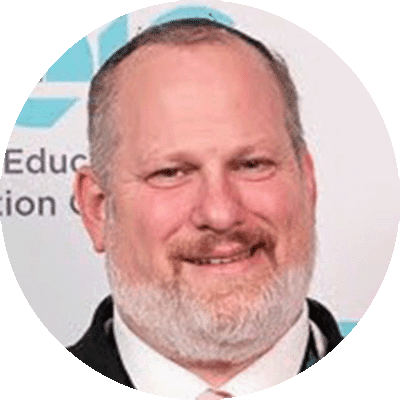
Rabbi Shmuel Feld‘s vision of education stems from the dance floor and the balcony. On the dance floor, he served for 25 years with an M.Ed. from Harvard in Jewish education as a teacher and principal. In the balcony, Shmuel is the founding director of the Jewish Education Innovation Challenge.
In my first year of teaching, I taught a student whom we will call Yossi. From the time he started 1st grade reading groups, Yossi was placed in the lowest track. This pattern persisted through my 11th grade Gemara class. A few weeks into the first semester of 11th grade, Yossi approached me after class to ask me a burning question which he was embarrassed to ask in front of his peers. He asked, “Who is Rabbi Baraita?” I said, “What do you mean?” He responded, “My past teachers kept explaining ‘the Baraita says…’ Who is Rabbi Baraita and why is he referred to as the Baraita?” I unpacked the question, explained that a baraita was a rabbinic teaching not included in the six orders of the Mishna, and encouraged Yossi to ask more questions. Through this disheartening interaction, I realized that Yossi’s question was not rooted in his lack of capacity, but rather in the poor pedagogy of the teachers who introduced him to Gemara study. Twenty-five years later, I merited the opportunity to implement a stronger pedagogy.
Around three years ago, JEIC helped a Jewish day school develop a pilot project for a new methodology for teaching Talmud to their middle and high schoolers. In addition to the usual issues with inducting students into this ancient and valuable, yet difficult and enigmatic method of learning, these particular young men also displayed a variety of learning challenges. Some had language-based learning issues and others had been turned off from learning Gemara through negative experiences in previous day schools.
Why Study Talmud....
The Written Law (the Torah itself) remains an indecipherable and incomplete gift from God without the simultaneous study of Rabbinics. These foundational texts …
We developed a method of inducting students into Talmud learning in a way that helped them to involve themselves in continual reading/interpreting practice, engage deeply with the subject matter, and develop a Jewish belief system that included the importance of ongoing Torah study. More importantly, we shifted the underlying assumptions of the teachers who believed that Talmud needs to be taught the way it has been taught over the past 75 years. Students present different challenges today than the learners who studied in classical 19th century Lithuanian yeshivot, hence our methods of teaching Talmud need to evolve together with our students. Below is a summary of the new pedagogical model that we successfully tried, with the elements broken down into discrete steps.
We began the year with an overview of the path of Torah SheBe’al Peh from Har Sinai until the writing of the Gemara. Topics included how mesorah was transferred from generation to generation before the Oral Torah was written down, the origin of mahloket, the role the Sanhedrin played and the changes that came with the loss of the Sanhedrin, and the writing down and editing of the Mishna and Gemara. We also had the teachers review core beliefs related to a personal and national relationship with God and the mission of Judaism as laid out by the rabbis. This gave the students a context through which to understand the texts they would be learning, and it introduced topics for students to think about while not necessarily receiving immediate and specific answers to their questions. With a new appreciation for context, students like Yossi might be able to ask a more sophisticated question like: “if Beit Shamai and Beit Hillel argue regarding the required body position for reciting shema, what did people do over the course of the 1300 years between Har Sinai and the moment of that mahloket?”
The students’ study of core beliefs in God at the beginning of the year empowered teachers to incorporate regular reminders of the connection between God and the Torah SheBe’al Peh. Students benefited from studying “inside” the text while simultaneously receiving continuous reminders of the “big beliefs” alongside their study of the Talmud text.
We developed a methodology of giving the students the conclusion alongside the statements of Amoraim–which are usually only a few quotes—in order to provide them with an algorithm for independently figuring out the text of the sugya. When the Gemara digressed onto side topics, the students were unfazed, already knowing where the thread of conversation was going to go. Additionally, the algorithm highlighted the original construction of the Gemara by Ravina and Rav Ashi starting with the statements of Amoraim, differentiated from the later layers of anonymous debate and supporting sources (called the stama deGemara) which were later added by the Savoraim (circa 600). As was to be expected, middle schoolers needed more structure at the beginning to work on the text access skills to understand the overall structure of the Gemara. As they proceeded through the year, they became more independent in accessing and comprehending the text. Conversely, the high schoolers—in order to remain engaged—needed more discussion about the core topics and patterns of arguments, as they had already mastered the text access skills.
We created an electronic graphic organizer for the teachers to imagine, construct, and lay out lesson plans for each class. The organizer included spaces for four categories for each and every class period: content, skill, motivation, and emunah. Content and skill categories reflected typical lesson plans. The motivation category forced the teacher to think of a hook exercise, theme, or embedded idea to bring the class together in an interesting and engaging way. The emunah category, which we defined as not only “belief” but more like “life direction,” filled a certain gap that arises from the fact that the goal of Talmud is not to develop emunah in teenagers, given that the rabbis of the Talmud, made the assumption that emunah was already inculcated into its readers. We make the opposite assumption, intentionally bolstering this area so that our students can approach Talmud learning as a religious experience as well as an intellectually expanding experience.
After the students mastered, each to his own level, decoding, interpreting, comprehending the gestalt of the sugya, and understanding the halakhic and moral messages contained therein, we taught them how to map a page of Gemara and explain the logic flow. While we did this using blank puzzle pieces, this can also be accomplished through mind mapping. We enhanced this process using daily exit tickets that repeated the same questions every day so that the ideas rooted in the questions became ingrained in the students’ thought processes. The exit tickets contained queries such as, “In today’s sugya, pick an important statement and explain why the rabbis included this statement and placed the statement specifically in its location.”
As part of the process of changing the way Talmud was taught and moving away from antiquated methodologies, we needed to change the underlying assumptions of the teachers—that teachers needed to ensure that students could regurgitate their lecture rather than personalize and integrate the learning according to the student’s ability. The previous method worked fine for a small percentage of students whose learning proclivities matched those of the teacher, but the rest of the students did not make much progress in their Talmud study.
When the teachers shifted their core belief to “every student has cognitive modifiability (the ability to intentionally change that person’s brain for better understanding),” a very different and positive result occurred. Failure became feedback. A student measured success based on how far the student traveled, not how far other students traveled at the same time. Helping the teachers shift their underlying assumptions involved assisting them in critically examining the premises that influenced their thoughts. This process took a while as it involved challenging existing perspectives, building new paradigms, and developing new strategies through one-on-one consulting, interviews with students to get feedback, and watching videos of their own teaching with a consultant.
As a result of the shift in perspective, the teachers altered the class flow.
- They continuously asked, “what will the Gemara do next?” Since the teacher already shared where the Gemara was going, the students most often could discern what the next logical steps would be to get there.
- The teachers familiarized themselves with the commentary of R. Asher (commonly known as the Rosh) as the summary with which to guide the students. This allowed the teachers to answer big questions about the strategies of the Gemara text and what the ultimate halakhah might be.
- Emunah was mentioned in every class. Students need a daily dose of outside philosophical clarity to keep the Gemara front and center in order to continue conveying meaning to them. Each student kept a list of theological questions for which he did not yet have satisfactory answers.
Students similar to my former student Yossi benefited from this type of approach still in its early stages. Just the question about what the Gemara would do next made them feel engaged and like they were part of the process instead of passive and compliant. Towards the second half of the year, they even started to risk answering the question and got it right several times.
Many Jewish day schools still approach pedagogy in Talmud as an apprenticeship, with the teacher/rebbe lecturing the students who are supposed to catch on through a figurative process of osmosis, a system that does not work for the majority of today’s students. We, however, want our students to internalize the lessons of learning our Talmud; we never want it to become an exercise in reading comprehension of a foreign language and a strange culture. Adopting the methodology described above allows a greater number of students to master early and intermediate Talmud skills in middle and high school and students may even gain the skill for independent and immersive learning of one of the great gifts in our tradition, our Talmud.
At the pilot school, students ended the first year with an enormous sense of pride. In our interviews, each student spoke of the magic moment when Gemara went from “impossible” to “challenging, but possible!” The teachers spoke of one time they were late coming to their classes because a meeting ran late. They were shocked to enter the classroom to find their students were reviewing the previous day’s material in hevruta without any teachers present. One student asked the teacher, “Why do Rabbi Akiva and his students get quoted so much in the Mishna and baraita?” The teacher paved the way for new understanding with a timeless Gemara response, “Good question, let’s discuss it.”



Rabbi Shmuel Feld‘s vision of education stems from the dance floor and the balcony. On the dance floor, he served for 25 years with an M.Ed. from Harvard in Jewish education as a teacher and principal. In the balcony, Shmuel is the founding director of the Jewish Education Innovation Challenge.
Reach 10,000 Jewish educational professionals. Advertise in the upcoming issue of Jewish Educational Leadership.
Do you want to write for Jewish Educational Leadership? See the Call for Papers for the upcoming issue.
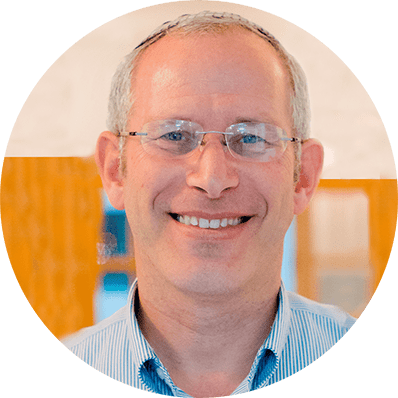

FROM THE EDITOR: Fall 2023
Fascinating. Infuriating. Uplifting. Complex. Boring. Inconsistent. Logical. Brilliant. Eclectic. Irrelevant. Compelling. Frustrating. Inspiring. Ancient. Contemporary. The Talmud evokes all the above, and more. I vividly remember my first encounter with Gemara. I must have been ten years old, and my family was in a bungalow colony in the Catskills. Rabbi Cohen taught Gemara to the older boys, of which I was not, but I asked permission to sit in and listen. I loved following the discussions and debates, even though I couldn’t read any of it and retained none of the content.


The Block Method for Teaching Gemara
By its very nature, teaching Gemara seems to defy everything we know about education. When we teach math, or language, or anything else, we start with the simple and easy-to-grasp aspects of the study area and gradually increase the level of challenge and difficulty. For example, we begin with addition and slowly move on to subtraction, multiplication, and division. We certainly don’t touch algebra until these are firmly in place. One couldn’t imagine a math class that requires knowledge of Pythagoras’ theorem presented to a class that has not yet mastered multiplication.
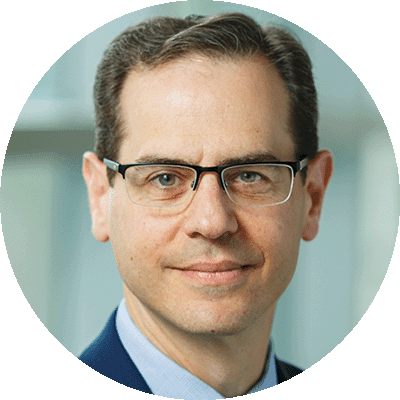

The Puzzling Talmud
A sixteen-year-old American Jewish day school student named Brandon (a self-chosen pseudonym) reports that he likes studying Talmud. What does he like about it? “I like the process,” he says. “It is kinda like a puzzle, that you have to get each word, and fill it in so it creates the whole text.” Brandon approaches his study of Talmud knowing that it’s going to be hard. Every word might take some effort to decode. Eventually, however, he can put it all together.
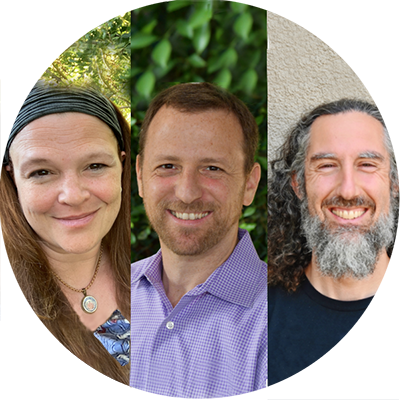

A Multidimensional Approach to Teaching Rabbinics
Pressman Academy is an early childhood through 8th grade school in Los Angeles serving a religiously diverse group of students. The school’s Judaics program, which includes Hebrew language, Jewish history, Tanakh, and daily prayer, affords a maximum of two weekly periods to teaching Rabbinics (in grades 5-8), presenting a significant challenge of what to include and how to approach it.


The Sanhedrin is in Session: Experiencing Rabbinic Literature
On Tuesday morning Rabban Gamliel called the gathered people to order. A letter had arrived from a northern district court in the Galilee which required the attention of the Sanhedrin. Rabban Gamliel took his seat at the head of the semi-circle of esteemed Rabbinic colleagues. R. Yehoshua sat on one side of him and R. Eliezer sat on the other.
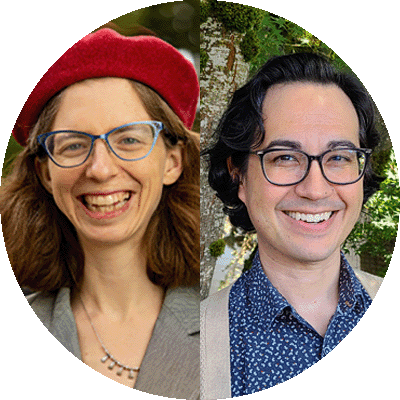

Replacing Relevance with Relationship
A relationship to Talmud study is highly valuable to those who possess it. Few other activities manage to combine elements of intellectual inquiry, spiritual questing, and moral development in the almost alchemical way that the study of Talmud does. And yet, there are a number of hurdles students must overcome in order to develop an independent relationship with the Talmud. First and foremost, studying Talmud in the original Hebrew and Aramaic can feel scary to the uninitiated. Second, the logic of the Talmud is foreign to students at first. Finally, students may wonder what a text from 1500 years ago might have to say to them.
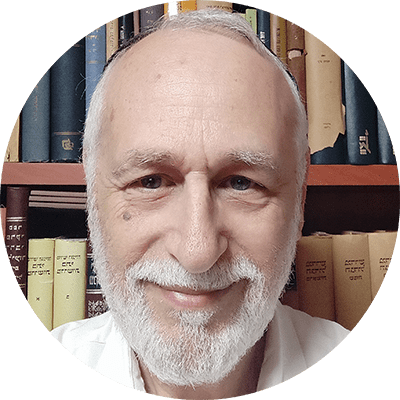

Teaching Talmud in Secondary Schools: Masorah and Modernity
Teaching of Talmud in traditional secondary schools has been a conundrum from the day it was decided to teach Talmud as part of the standard Jewish studies curriculum. Programs for yeshiva high school graduates in Israel and around the world are consistently populated by an overwhelming percentage of students who, even after six years of multiple weekly hours of Talmud instruction in secondary schools, are helpless in the independent study of Talmud. These students are successful independent learners of advanced mathematics, natural sciences, complex technology, and even humanities, but in Talmud, they require an embarrassing degree of spoon-feeding.
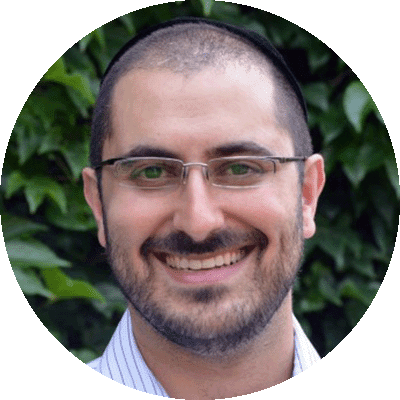

Pre-Mishnah: The Missing Link
I teach 5th grade Judaics at Fuchs Mizrachi School, a Modern Orthodox Zionist school (Cleveland). Upon entering the world of Torah SheBe’al Peh, a student is first greeted by the Mishnah—a complex and sophisticatedly interwoven compendium of Jewish law and wisdom. Students struggle to understand its relevance, how and why it was created, and its importance to the scope of their Torah learning. They ask, “Why are we learning Oral Torah?” and “Why should I care?” but underlying those questions is the more fundamental, “What is the Oral Torah?” While some choose to address this piecemeal over the span of many years, I believe that it is important to address it up front, in an organized manner.


Anatomy of a Gemara Lesson
You have been there, too, right? You thoroughly prepared a Gemara lesson by formalizing how you will explain the shakla vetarya, you concocted attention-grabbing examples and cases, charts to organize the conflicting opinions, and provided a translation and question practice worksheet. You slowly read the Gemara aloud while students annotated the text or completed linear translation sheets. You patiently and clearly explained the concepts and reasoning on a first, second, and even third pass of the reading.
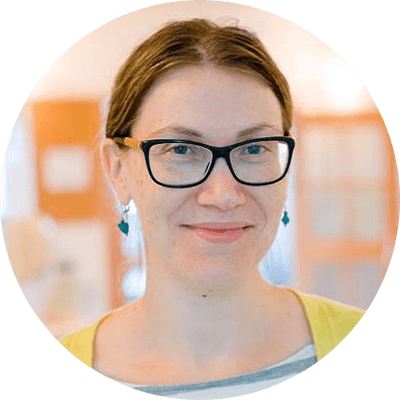

Making the Case for Agada
The rabbis of the Talmud were intentional and thoughtful educators; an example of their consummate pedagogic skill is the way they interspersed narratives into their halakhic writings and teachings. Their use of agadot is an effective teaching tool because, simply put, people love stories. We evolved to tell stories, to become compelled by stories, to connect to the characters, drama, and tension in stories. Stories draw in our students and they have the power to make them care.


Tokhehah Leshem Shamayim
One day, in a 7th grade lesson during our unit on tokhehah (the mitzvah of rebuke), a student shouted out from across the classroom: “This is tokhehah leshem shamayim!” In this moment, with one eloquent and original phrase, this 7thgrader had connected the learning in our current unit of tokhehah with the concept of leshem shamayim (for the sake of heaven) from our previous unit of mahloket (disagreement). This delighted us because it showed that the concepts of mahloket we had been teaching were not just retained for the duration of our unit, or for a test, but were concepts students internalized, held on to, and could apply to new settings and used in unique ways.
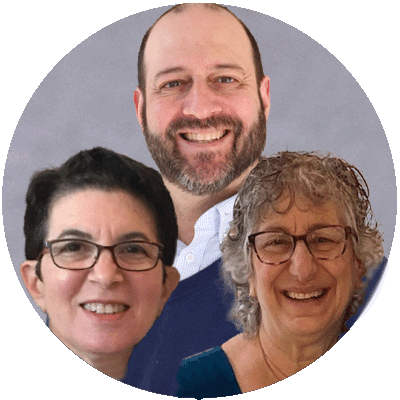

Extending the Reach of Rabbinics
Morah M.’s 5th-grade class is curating a museum exhibit showcasing artifacts that represent family legacy and tradition. The items are described on a placard that explains: These candlesticks were my Bubby’s and now my mother and I use them for Shabbat. When I chose them, I thought of the story about R. Yehuda HaNasi that we learned (Ketubot 103a). Before he died, he told his family that they should continue to set the table the same way, keeping the lamp in its usual place. We’re sort of doing the same thing when we use Bubby’s candlesticks.


Talmud Education for Diverse Learners: Taking the “Long but Short” Road
Teaching Talmud to weaker students can present many challenges not typically found in traditional Gemara classes. Navigating a text in a foreign language, especially one with the unique structure and rules of the Talmud, can be daunting for those grappling with language-based difficulties. Educators must realistically decide which teaching method—skill-based or discussion-based—will best set diverse learners up for success, and how demanding a Talmud course should be for students not likely to pursue this type of Torah learning in the future.
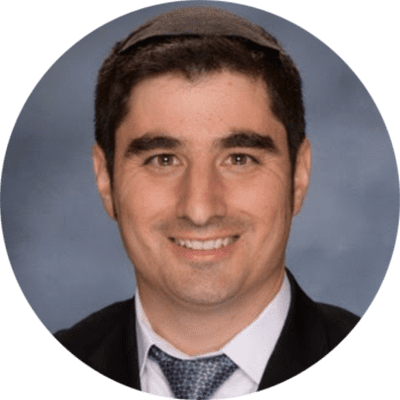

Teaching Talmud Guided by Essential Questions
Standing at the edge of the sea can be an awe-filled experience—the incomprehensibly vast expanse of water with no end in sight is both inspiring and intimidating. We would not consider entering it, whether to swim, sail, surf, cruise, or dive without proper preparation. Similarly, the Sea of Talmud is rich with information, personalities, debates, and much more. It, too, can inspire and intimidate with its vastness and complexity, and we should not expect our students to be able to jump in and navigate it without context and a roadmap. To prepare our students as they embark on their journey into the Oral Torah, we need to define our goals and our strategies for achieving them.


“Wait, What?!” Teaching Jewish Law in a Reform Jewish School
As a teacher at Rodeph Sholom School (RSS), I have for some time considered what it means to teach Torah SheBe’al Peh in a Reform Jewish independent school. What I offer here is a taste of how my colleagues and I have strived to shape our 7th grade Rabbinics unit so that it is aligned with our school’s mission and meets the needs of our specific community of learners. And while every school is unique, I am hopeful that the insights I’ve gained from teaching one unit on the development of Jewish law are instructive for any Jewish day school grappling with teaching Torah SheBe’al Peh.


A Learner-Centered Approach to Teaching Gemara
Traditional methods of teaching Gemara, such as hevruta learning followed by an interactive shiur, have stood the test of time. When teaching beginner students, however, this approach is less common, given their lack of prior knowledge or skills. As a result, many teachers prefer a frontal approach, perhaps projecting the daf on the SMART board and presenting the text phrase-by-phrase while students take notes between the lines of the traditional Vilna text. If hevruta time is used, it is often for the students to review material rather than for them to try to decipher the text. In this article, we are going to propose a method for using a modified version of the traditional approach which can be used for learners starting out on their Gemara learning careers.
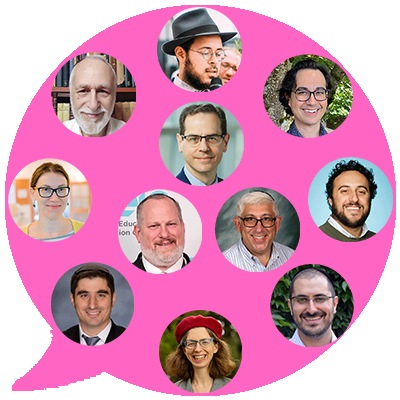

Why Learn Talmud?
Some of the articles in this issue describe the joy of studying Talmud, others break down the complex processes to make it more accessible to students or to enable the students to engage with it meaningfully. And just to make sure that we covered the bases of both the how and the why of Talmud study, we asked our authors to weigh in separately on the question: “Why do you think that day school students should be learning Gemara/Rabbinics?” We invite you to join that discussion.
Fall 2023 Journal Credits
JEWISHEDUCATIONALEADERSHIP
Jewish Educational Leadership is a publication of The Lookstein Center for Jewish Education of Bar Ilan University.
Chana German, Executive Director
JOURNAL STAFF
Hyim Brandes | Editor
Zvi Grumet | Editor-in-Chief
Chevi Rubin | Editor
Shani Sicherman | Copyeditor
Please send correspondence regarding journal content to zvi@lookstein.org.
The Lookstein Center publications present a variety of viewpoints. The views expressed or implied in this publication are not necessarily those of the Center.
EDITORIAL OFFICES AND ADVERTISING
The Lookstein Center for Jewish Education
Bar-Ilan University
Ramat Gan 5290002 Israel
Tel: +972-3-531-8199
US: +1-646-568-9737
www.lookstein.org
© 2023 by The Lookstein Center for Jewish Education.
All rights reserved.





